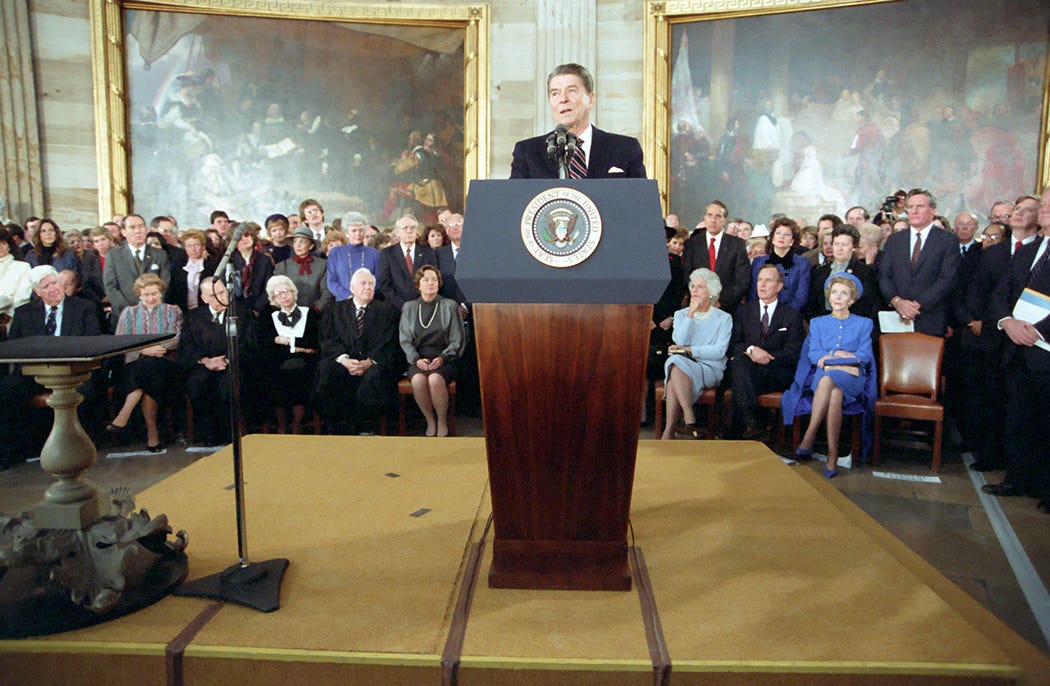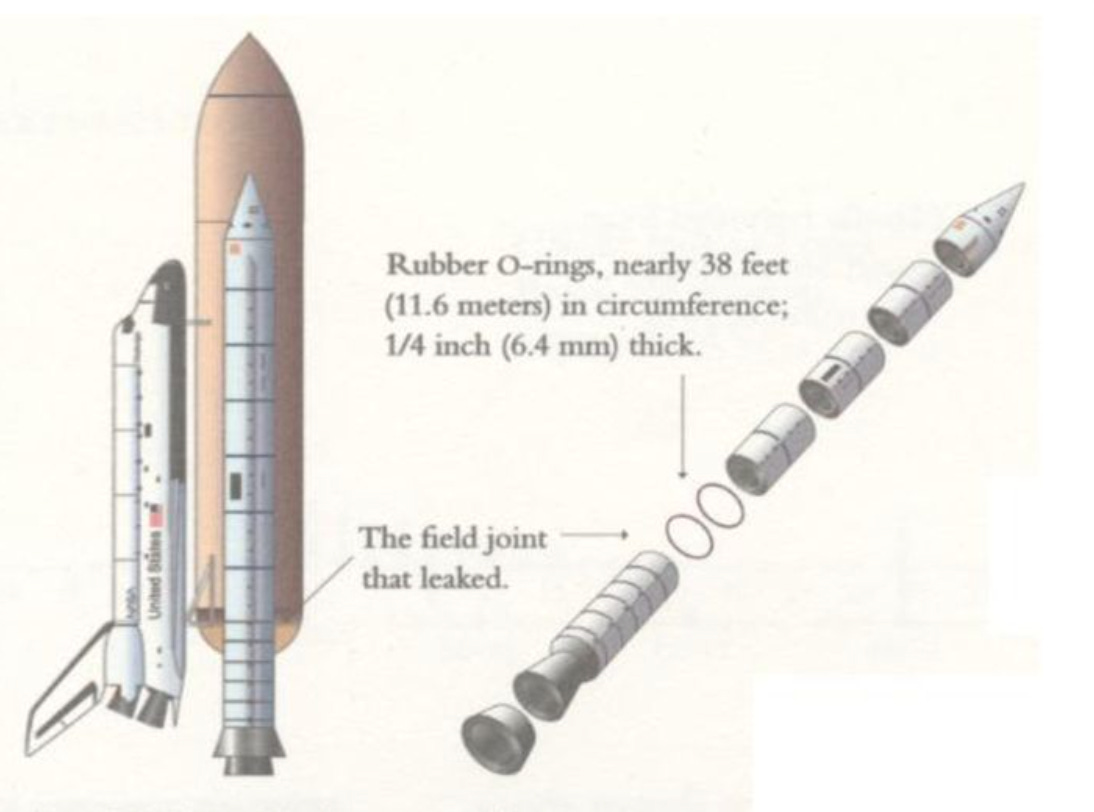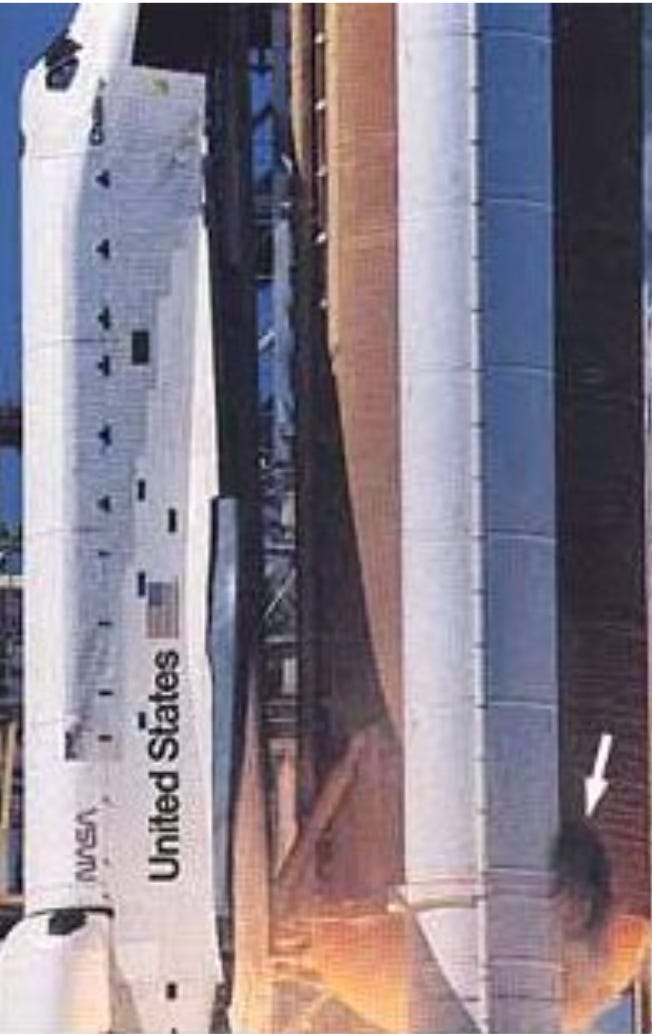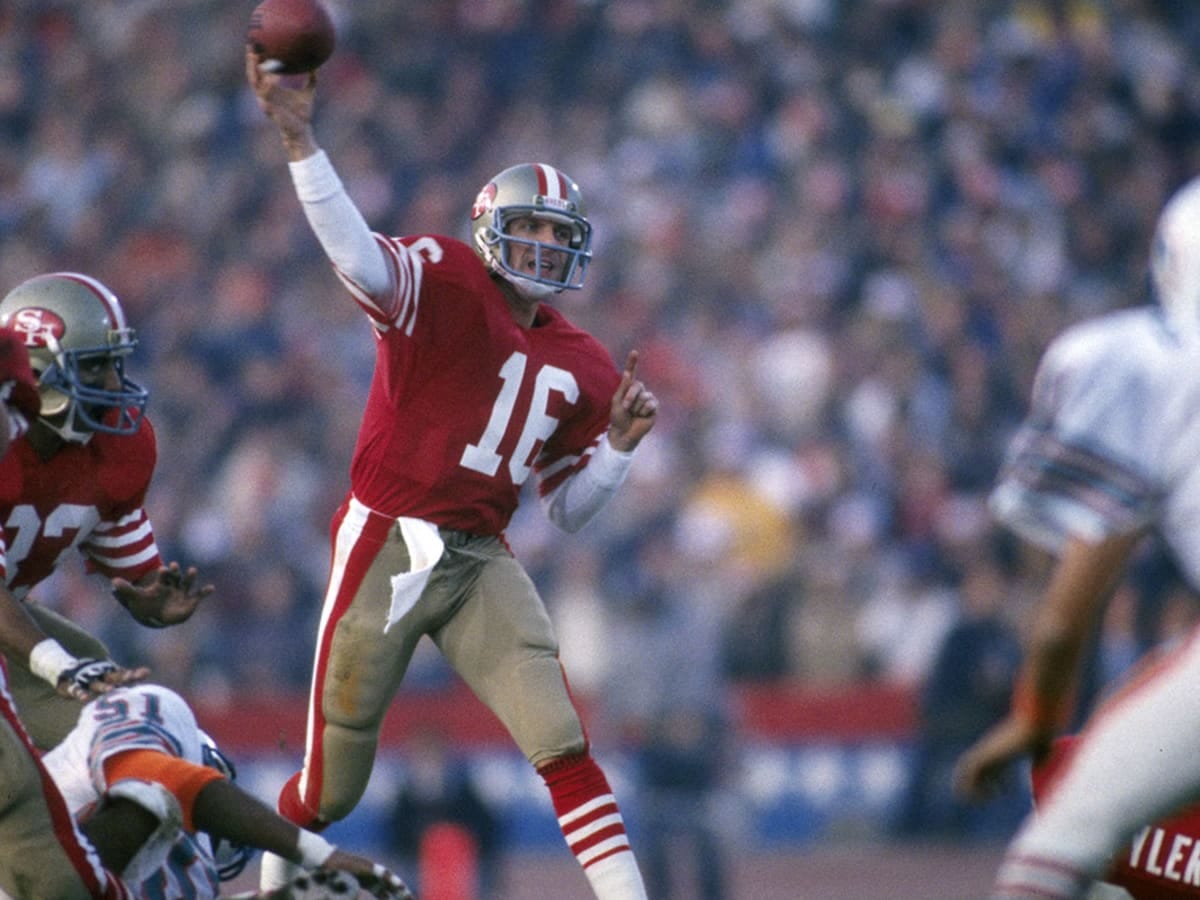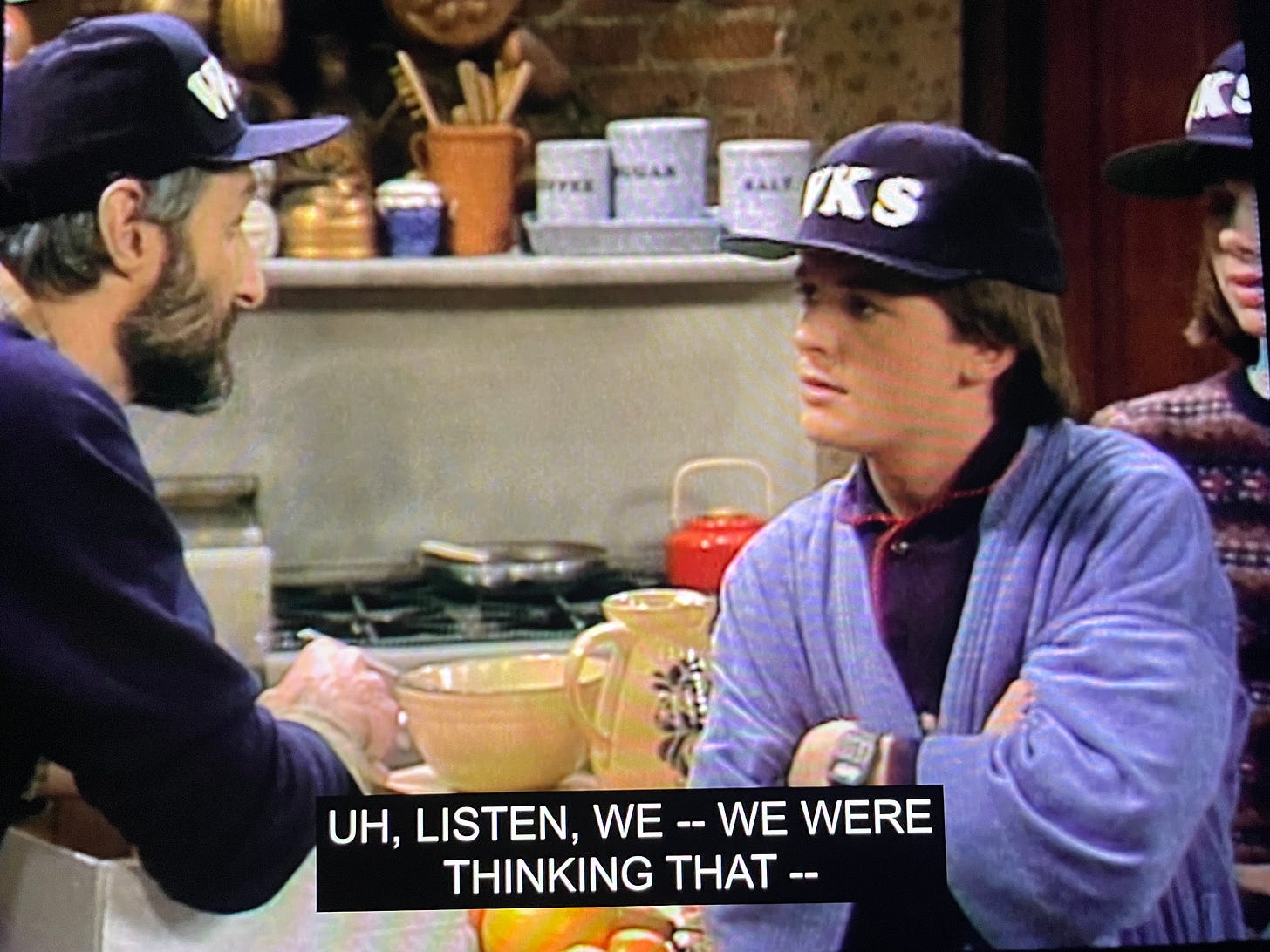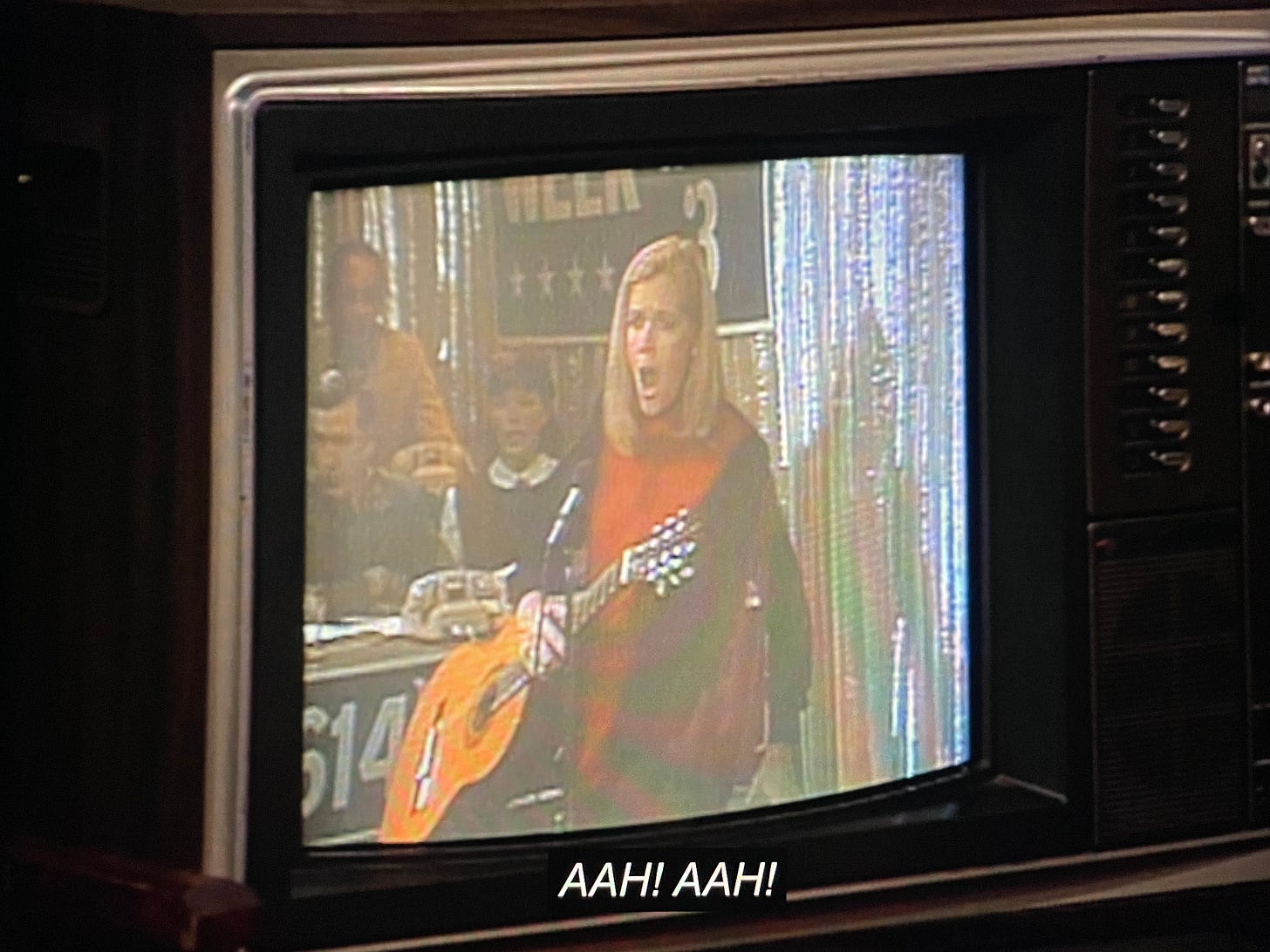Shoving a brick through a crack
January 24, 1985: America freezes and watches the Super Bowl; the space shuttle sends a signal that we should have listened to; Family Ties starts auto-destruct
This week, America was polarized. North Polarized. The kind that brings us closer together.
The week of January 20th, 1985 was the coldest recorded week in the twentieth century for much of the Midwest and South. It was a “polar vortex,” where the cold air that usually swirls around the Arctic gets off track and dips into our airspace.
All-time record lows were set in 58 cities on Monday the 21st. Chicago was -27F degrees, and the wind chill was -60F. Mt. Mitchell in North Carolina booked -34F. It was -2F in Central Park, -4F in D.C., and -8F in Atlanta.
The Florida citrus crop endured what was called “The Freeze of the Century” - 90% of its orange acreage suffered damage from the cold.
Cold news: The Inauguration
Back in 1981, Ronald Reagan’s first inauguration had been one of the warmest ever, clocking 56 degrees. But not this time! On Sunday, January 20th, facing near-zero temperatures and biting winds, the outdoor inaugural speech and parade were canceled. The Capitol Rotunda was “hastily chosen” as the indoor venue for a non-public swearing-in.
This was the first time the inaugural parade had been canceled for weather since the Andrew Jackson in 1833, and the last time, until Trump’s inauguration this year.
“I would like to cry,” said Ron Walker, chairman of Reagan’s inaugural committee.
Cold news: A warning about the space shuttle
The space shuttle Discovery launched this Thursday, the same day that our FT episode aired. The mission, STS-51-C, was the fifteenth for the whole program, and it was the first one that was dedicated to the Department of Defense.
The payload was classified. Exact launch time wasn’t made public until 9 minutes before liftoff. For the first time, the space shuttle was an official defense thing with secret stuff (it was a CIA satellite).
The story I want to tell, though, had to do with the cold. STS-51-C was scheduled for Wednesday the 23rd, but the launch had been scrubbed because of the cold snap. There was ice all over the fuel tanks and launch pad. So it launched the following afternoon. The temperature was still cool, 53 degrees.
The flight was a success, but after an inspection engineers found problems with the recovered solid rocket boosters (SRBs), the big white tanks on either side of the shuttle that drop off before orbit. They were built in segments, connected with joints that included an O-ring made of specialized, heat-resistant rubber. They were big, 12 feet in diameter, but very skinny, only 1/4 inch thick. They’re designed to “seat” after ignition and seal tightly as heat expands them into a groove, keeping the hot gases inside the combustion chamber. They’re also redundant, two at each joint.
After mission STS-51-C this week, both left and right SRBs showed a worrying failure in these O-rings. Hot gas had blown by the primary O-ring and charred the second one. The engineers concluded that the cold weather, 53 degrees (and even colder overnight before the launch), had made the O-rings too rigid to properly seal during liftoff.
In the time between this finding and the launch of the Challenger almost exactly a year later, engineers at Morton Thiokol (MTI), the defense contractor that made the SRBs, were concerned about the safety of the O-rings in cold weather launches.
One of them, Roger Boisjoly, wrote a memo to his management in July 1985, which said that if the same O-ring failure occurred again, “the result would be a catastrophe of the highest order — loss of human life”
Six months after that, January 27, 1986, Boisjoly and a team of engineers huddled at MTI on the day before the scheduled launch of the space shuttle Challenger. They knew the weather forecast. The temperature would be 18 degrees overnight, and only 26 at the proposed liftoff time of 9:30AM. Another Florida cold wave.
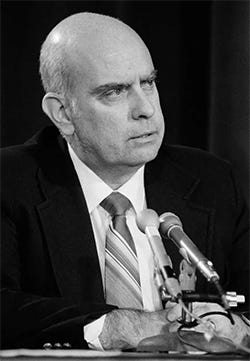
The engineering team at MTI unanimously recommended that the launch be delayed until the cold receded. Before the launch, Boisjoly told his superiors that at this temperature, O-ring seating “would be like shoving a brick through a crack instead of a sponge.” He showed them photos of the damage from the 1985 flight and asked “how can you ignore this?” The engineers said that the shuttle shouldn’t launch unless the temperature was 53 or higher - a suggestion that “appalled” NASA’s head of the program.
What followed over the next 12 hours (literally) became a case study in bureaucratic dynamics. I won’t go there.
It’s easy to draw conclusions in hindsight, but what we know for sure is that the engineers said no, but the management at MTI, under pressure from NASA, overruled the engineers in a separate 15-minute meeting that excluded them. They sent a signed letter to NASA, certifying MTI’s official approval of launch.
To oversimplify it, instead of being asked to prove that the O-rings would work, the MTI engineers had been asked to prove that they would fail. And how would they do that?
In the end, of course, the launch happened. The SRB O-rings showed signs of failure less than one second after liftoff, with a visible smoking leak:
One minute later, at 40,000 feet, that puff of smoke turned into a bright plume, visible on video, as hot gas leaked from the SRB. The torch was directed toward the tank in the center, which itself started leaking hydrogen. The SRB prematurely disconnected and collided into the big tank, which ruptured, and then it was all fireball. It became the Challenger Disaster. The crew fuselage remained intact and was flung 3 miles higher before plummeting to the ocean.
I was at home that day in 1986, watching the launch on TV in North Carolina. The county canceled school because, well, it was too cold! Three degrees that morning.
Anyway, Roger Boisjoly was proven right, but he was not rewarded. He left Morton Thiokol after he was ostracized by his colleagues and removed from space work. He testified to the investigation commission, making public his 1985 internal memo of warning.
One of his former friends told him, “If you wreck this company, I’m going to put my kids on your doorstep”
In other news, America was unsettled by a new finding. Straight people were getting AIDS!
And no, not just intravenous drug users and Haitians. The CDC said that fifty-nine cases of AIDS in the US had been contracted through heterosexual contact. To that point, there had been 7,981 total AIDS cases in the US. Half of those people had already died.
This was a time, only four years after the disease was first identified, when experts still didn’t understand how the virus was spread, or how it made people sick. We knew that incubation took a long time, and that some people were testing positive for the virus but not showing symptoms, so maybe…you can beat it? The national consciousness was a mixture of fear, misinformation, denial, and other-ism.
At that point, over 90% of the ~8K identified cases in the US were gay men. Yes, we knew that AIDS was spreading rapidly among heterosexuals in Africa, but, y’know, Africans were different. So what were these people doing wrong to get this disease? The word “promiscuity” appears in this NYT piece seven times, tagged as the most prominent risk factor.
The clear message in January 1985? Stay straight, stay American, avoid butt stuff, and you would be safe.
Super Bowl week
Dan Marino, in his second year in the NFL, had shattered season records for TD passes (48) and passing yards (5,084). The TD pass record would stand for 20 years, until Peyton Manning broke it in 2004.
At Stanford Stadium in Palo Alto, Marino and the Dolphins (14-2) would face Joe Montana and the 49ers (15-1) in Super Bowl XIX.
These were the league’s top two teams in scoring offense, led by the top two QBs in passer rating. But the game wasn’t close. The Niners had a 28-16 halftime lead and shut out the Dolphins in the second half, winning 38-16. Montana, named MVP, passed for 331 yards and 3 TDs. The Niners also broke the record for total yards (537).
It would be Dan Marino’s last chance at a title.
When I first started our Family Ties journey last year, I wrote that the 1984 Apple Super Bowl commercial that launched the Mac was the moment the “Eighties” started.
Well, they aired a Super Bowl ad in 1985, too. And what did they learn from the success of the 1984 ad? Go darker. More death. Maybe a mass suicide - of blindfolded people! And let’s make viewers confused and queasy. People should just *feel worse* after.
The result was the infamous “Lemmings” ad. It follows a bleak line of blindfolded people in business suits, carrying briefcases, with their other hand on the shoulder in front of them. They trudge through a volcanic-looking wasteland. Whistling the Heigh Ho song of the seven dwarves, they plunge lemming-like over a cliff into an abyss. Because they don’t have a Mac.
It was directed by Tony Scott, who would direct Top Gun the following year. His brother Ridley Scott had directed the 1984 ad. The ad was meant to launch The Macintosh Office.
What was The Macintosh Office? Doesn’t matter. Nobody remembers. Jobs would leave Apple the same year. (Don’t worry, Apple will be fine.)
Tony Scott took his own life in 2012, at the age of sixty-eight. By jumping from a height. Into water. Off a bridge in LA. He called Ridley right before. He left a note.

IBM, meanwhile, was struggling to meet surging demand for its recently launched PC-AT. It was $5,000, with an upgraded -286 Intel chip and a yyuge 20MB hard drive, which could hold maybe six of the photos from your iPhone. AT stood for “advanced technology”
IBM was helpless to accelerate production, because aside from the keyboard, not a single component of the computer was made by IBM, so it was forced to wait on suppliers. Don’t worry, IBM will be fine, too — though they don’t sell computers anymore at all. They do…AI quantum hybrid cloud something something?
Family Ties S3E17: Birth of a Keaton, Pt. 1
This episode is a two-parter. Note the title. It’s easy to forget that Mom has been pregnant all season. And yes, we have reached the crossroads where a series brings in a damn baby and everything goes downhill.
It’s a thing, it has happened hundreds of times. It’s called the Cousin Oliver, referring to a kid that was introduced on The Brady Bunch in its dying throes.
It’s also interesting that in the last two episodes, PBS funding has been front and center, this week plus last week’s time travel / congressional funding story. In the last post, I wrote about what was bugging conservatives about public TV in 1984-85.
Reluctant togetherness
The KIDS are milling around the kitchen at breakfast time. MOM is inexplicably strumming a guitar(?) at her work table. This is pledge week at Dad’s PBS station. Every year the kids are recruited to “volunteer” at the telethon, and Dad makes them do a family video promo.
The kids hate it. They want to rebel. It’s too boring. But after DAD floats in excited, singing the WKS slogan song and happily putting WKS caps on everyone’s head, they can’t bring themselves to tell Dad they quit.
Mom asks Dad if she can play guitar (aha!) and sing on the telethon, and he has to say yes, of course dear [wince]
The telethon
DAD is setting up on the first pledge day. The kids arrive, feigning interest and consent. MOM lugs her guitar.
The kids are bored at the phone bank, ALEX plays poker with the other kids and grifts them out of their allowance money.
They used to love it - didn’t they?
Back home that night, DAD tells MOM he’s frustrated that the kids aren’t on board. She thinks the problem is that he doesn’t ask the kids to help, he just assumes they’re a fixture, takes them for granted. Just ask them, Steven.
Dad takes it well - oh what a jerk I was! He does the right thing, gathers the KIDS to apologize and tell them that volunteering is entirely up to them. They smile and praise him for his consideration, and then say OK cool, we’re not coming! Thanks, Dad.
Mom’s high note
On camera, DAD introduces MOM to viewers. He starts to cover for his kids, and behold, they show up from stage right. Surprise! They do their cute intro, smile and wave. They did their 10 seconds.
But backstage, Dad gets an urgent call about a plumbing emergency at home. Oh no, he has to leave right before Mom’s big song! He’ll be apart from her at her big moment. What might happen?
At the house, Dad is bickering with BUD the Plumber. He pauses to watch Mom on the TV screen, singing her song. Look, that’s my wife! She hits a high note, and it turns into a wail. She’s in labor. Which she declares to the audience.
On live TV, the kids hurry her to the door as she pleads to Dad on-air to meet her at the hospital with her go bag. It’s snowing outside. Will Dad make it?….
TO BE CONTINUED!


